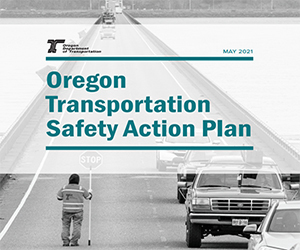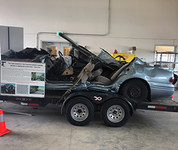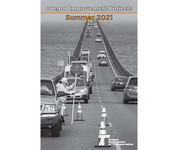|
|
|
June 2021
Whether driving, riding, or walking, looking out for each other is how we roll. Let’s all do what we can to help make sure everyone gets to their destination safely. Below are some tips for people driving and bicycling to help keep everyone safe.
For people driving:
- Always have an eye out for people walking, bicycling, and also rolling on skateboards, scooters, wheelchairs, etc., especially during dark hours.
- When you are entering a popular bike or pedestrian area, expect that you may encounter them and slow down ahead of time.
- Be prepared to stop when approaching crosswalks and never pass a stopped car at a crosswalk, they may be stopped for someone in the crosswalk.
- Drive at cautious speeds in rainy weather and in low-light areas.
- Avoid distractions such as cell phones so you can focus on driving. Remember, road conditions can impact your stopping ability, so be prepared.
- Only pass bicyclists if it is safe to do so; slow down and give plenty of room.
- Make it a habit to search and scan for people walking, bicycling, and other types of rolling activities the same way you do for other motor vehicles. That way, you’ll get where you’re going safely, with less worry – and so will everyone else.
Additional Material: Field Guide to Sharing Oregon's Roads, Give Space when Passing- English, Give Space When Passing Spanish, Oregon Rules- Selected Statutes.
For people bicycling:
- Stay alert and ride predictably. Never assume motorists can see you.
- Ride in the same direction as traffic, not against traffic, and in a single file.
- Always wear your helmet.
- Use bike lanes when available. Bike lanes provide a safe space just for bicyclists.
- Obey all traffic signs and signals. Look left, right, and left again to ensure your path is clear.
- Be visible. Wear bright clothing and reflective materials when you ride.
- Use a white front light, red rear light, and reflectors at night.
- Pay attention to traffic. Avoid using headphones or cell phones while you bike.
- Signal before making a turn or before stopping to warn traffic and other people riding behind you.
Additional Materials: Oregon Bicycling Manual, Field Guide to Bicycling in Oregon, Oregon Rules- Selected Statutes.
|
|
|
 It's No Game
Wearing your seat belt may seem like an option, but it shouldn’t. Not only can you get a ticket for not buckling up, but the odds of being severely injured or even killed also increase greatly if you are in a crash and are not wearing a seat belt. That’s why law enforcement agencies throughout Oregon will use federally funded overtime during May 24 to June 6 to educate the public about safety belt and child seat laws. Life isn’t a game and there are no do-overs, so be sure to buckle up.
|
|
 Comment on the Draft Safety Action Plan
A draft plan that will help Oregon improve transportation safety across all modes of travel – people walking, rolling, riding and driving – is open for public review and comment, now through July 9. The draft 2021 Transportation Safety Action Plan outlines strategies and actions to address safety needs in the various modes and across the state.
|
|
|
|

The Impact of a Serious Injury Crash - New Safety Tool
A new safety tool is available to raise awareness of the impacts of serious injury crashes. This crashed car and trailer combination focuses on the serious injury impacts of the crash – from the survivors’ perspective(s). The storyboards reflect the circumstances of the crash, and the recovery of the two individuals who survived. This particular crash hits close to home as it involves the family of one of our ODOT Region 5 employees. His family was gracious enough to share their story in the hopes that it would make a difference by not only saving lives, but helping to reduce the number of serious injury crashes and the lifelong impacts that these crashes cause, reminding drivers that “driving is a serious responsibility and that your actions on the road impact others, sometimes for life.”
|

Speed Kills: Spike in Traffic Deaths
Statistics have long shown that higher speeds lead to higher traffic fatalities. In 2020, Portland Police reported 58 traffic-related deaths, one shy of the all-time record. So far, 2021 is off to a worse start.
|

Summer Construction Map Available Now
This year’s construction map lists 101 projects happening on Oregon highways. Learn what’s being built or repaired, how it impacts traffic, and when it will be done.
|

States Ramp Up Traffic Safety Initiatives
With more Americans returning to the road and millions expected to take summer road trips, the Governors Highway Safety Association (GHSA) is alerting motorists that State Highway Safety Offices (SHSOs) and their partners are stepping up programs to make sure the nation’s roads are safe for everyone.
|
Resources
|